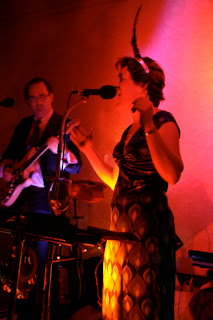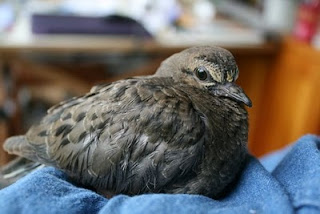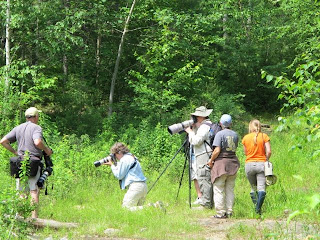It seems that the only thing we did last month was to look for the vagrant Whistling Heron reported elsewhere by Kevin Easley et al. And last weekend was not the exception! However, this time accompanied by Rafael Luck, Osvaldo Quintero and his son-in-law Joaquín, we stopped first at some marshes just east of Panamá City, the former Tocumen marshes. Like other days, we found the typical avifauna of these habitats, but dip on the heron again. Well, nothing to sorry about because we knew it was very unlikely to find the bird so far away of the original spot, but we did have a nice day photographing all sort of birds species, including HUGE numbers of Wood Storks, Neotropic Cormorants all over the place (see the photo above), and many Cocoi Herons, like the one pictured below.
These marshes are also very good for raptors, and we saw or heard Roadside, Common Black and Gay-lined Hawks, plus Pearl and White-tailed Kites too. This one was perched close to the road allowing some photos.
The site is the only reliable one for Yellow-headed Vulture close to the city, and we found at least three individuals resting close to the road.
We found no less than six Ringed Kingfishers in one stretch of a creek... soon we realized that they were nesting in the sandy banks. This image remind me the photos of bee-eaters at their colonies... after all they are related.
We went to the spot near Chepo, but the day was hot and we only found more birders trying, unsuccessfully, to relocate the heron... so we called it a day. The next day, I joined Karl and Rosabel Kaufmann and, very early, went to the spot near Chepo. Though we had a good day, we were not able to relocate the Whistling Heron. We checked miles of dirty roads, finding more Wood Storks and a beautiful Capped Heron sharing the pond with one of the storks.
Again, we saw many raptors, like Roadside and Great Black Hawk, White-tailed Kites, and several pairs of American Kestrels. Again, notice the absence of spots in the underparts... probably the same individual we photographed some weeks ago in the same spot.
New for our list of the site was this Bat Falcon perched in some wires. It allowed us to approach closely, a very cooperative bird.
Well, I don't know if the Whistling Heron will be found again... but that area surely will reveal many surprises in the future!










.jpg)
.jpg)
.jpg)





































